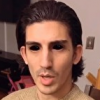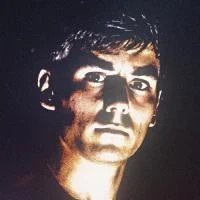-
Posts
73 -
Joined
-
Last visited
-
Days Won
5
HunterZ last won the day on July 4
HunterZ had the most liked content!
Contact Methods
-
Discord
hunterz_
-
Nexus Mods
HunterZ
Profile Information
-
Preferred Pronoun
He/Him/His/Himself
-
Location
Seattle
Recent Profile Visitors
HunterZ's Achievements

Thane (4/12)
7
Reputation
-

ACCEPTED Realistic Boat Bobbing SE (by Gandaganza/ToosTruus)
HunterZ replied to TechAngel85's topic in Skyrim SE Mods
FYI the recent update generates a couple of deleted record warnings in DynDOLOD. The author is looking into it. Error: Deleted reference Realistic Boat Bobbing.esp [REFR:000FF750] (in SolitudeDocks01 [CELL:000092BC] (in Tamriel "Skyrim" [WRLD:0000003C] at -16,23)) Error: Deleted reference Realistic Boat Bobbing.esp [REFR:000FF755] (in SolitudeDocks01 [CELL:000092BC] (in Tamriel "Skyrim" [WRLD:0000003C] at -16,23)) Update: This has been fixed in version 8.4. Thanks toostruus!- 11 replies
-
- 2
-

-
- SKYRIMSE
- 05-animation and physics
-
(and 1 more)
Tagged with:
-

ACCEPTED Far Object LOD Improvement Project SSE (by DoubleYou)
HunterZ replied to DoubleYou's topic in Skyrim SE Mods
FYI, this mod results in a massive chunk of "Textures do not match" warnings in DynDOLOD for dwemer roads. According to the DoubleYou, these can be safely ignored: Here are the actual warnings I get, for reference:- 18 replies
-
- 1
-

-
- SKYRIMSE
- 04-foundation
-
(and 2 more)
Tagged with:
-
Been messing with ENB settings a lot during my current Skyrim playthrough, so I figured I'd capture my thoughts in this post regarding various settings that aren't as fully documented in the guide as I'd like. I'll probably edit this to add stuff incrementally. Universal: IgnoreWeatherSystem [bool, global only]: If enabled, all per-weather settings from the associated category are ignored in favor of the global ones. IgnoreWeatherSystemInterior [bool, global only]: If enabled, per-weather "interior" settings from the associated category are ignored in favor of the global ones. [ENVIRONMENT] (can be customized per weather) - primary scene lighting settings DirectLightingIntensity* [0 .. 30000.0]: Controls how much sun/moon (or fake source when indoors?) lighting is applied to the scene. DirectLightingCurve* [0.10 .. 8.00]: Values below 1.0 boost direct lighting highlights, while values above 1.0 pull down the brightness while preserving color saturation. DirectLightingDesaturation* [-1.00 .. 1.00]: Negative values boost direct lighting color saturation, while positive values reduce it. DirectLightingColorFilterAmount* [0 .. 1.00]: Seems to subtly affect the mix between DirectLightingColorFilter* settings and the other DirectLighting settings, with increasing values pushing more towards the former. Note that DirectLightingColorFilter* settings are highly visible regardless of this setting. DirectLightingColorFilter* [RGB or HLS]: Influences the color of direct lighting. Default is maximum white, and major deviations from this can be highly visible regardless of other direct lighting settings. AmbientLightingIntensity* [0 .. 30000.0]: Controls how much non-source based lighting is applied to the scene. AmbientLightingDesaturation* [-1.00 .. 1.00]: Negative values reduce (yes, it's backwards for some reason) ambient light saturation, while positive values boost it. PointLightingIntensity* [0 .. 30000.0]: Controls how much light is cast by torches/candles/braziers/etc. Note that [COMPLEXPARTICLELIGHTS] also often adds its own light from similar sources if lighting mods are installed, but point lighting tends to cover a wider area and be less saturated by default. PointLightingCurve* [0.10 .. 4.00]: Values below 1.0 slightly reduce point lighting highlights but drastically reduce saturation, while values above 1.0 slightly increase highlights while drastically increasing saturation. PointLightingDesaturation* [-1.00 .. 1.00]: Negative values boost point lighting color saturation, while positive values reduce it. SpecularAmountMultiplier* [0 .. 30000.0]: Controls how much direct light and point light sources are reflected by supported textures, affecting how shiny/wet/plasticky they look. SpecularPowerMultiplier* [0.10 .. 8.0]: Values below 1.0 increase the size of reflections, while values above 1.0 decrease it (giving a more focused/sharp look, at the cost of intensity). SpecularFromLight* [0 .. 1.00]: Increasing values seem to simply counteract SpecularAmountMultiplier, unless I'm missing something? Cubemap* [various]: These settings seem to have no effect, at least on dynamic cubemap textures? See the Reflection settings under [EYE] and [REFLECTION] for other ways to influence cubemap intensities. FogColorMultiplier* [0 .. 30000.0]: Controls how much colored fog should be added to the scene. Note that this also brightens the fog no matter what (unless fog color is set to black, which has the same effect as setting this value to zero). FogColorCurve* [0 .. 8.00]: Values below 1.0 boost fog color highlights, while values above 1.0 pull down the brightness while preserving color saturation. FogAmountMultiplier* [0 .. 10.00]: Values below 1.0 reduce the fog amount (density/opacity and apparent starting proximity to player), while values above 1.0 boost it. FogCurveMultiplier* [0 .. 10.00]: Zero results in maximum fog amount, regardless of FogAmountMultiplier. Other values besides 1.0 seem to warp the fog density curve in ways that seem to badly accentuate the apparent near edge of the fog, unless the current weather's near fog starting distance is set to zero in the game data. FogColorFilterAmount* [0 .. 1.00]: Seems to simply get multiplied with FogColorMultiplier to determine the total fog color intensity. FogColorFilter* [RGB or HLS]: Influences the color of fog. Default is grey/white, and major deviations from this can be highly visible regardless of other fog lighting settings. ColorPow* [1.00 . .2.20]: Increasing these values results in an overall reduction of scene lighting from this entire category. [VOLUMETRICFOG] (can be customized per weather) - settings for in-world fog volumes, such as around mountains; not to be confused with global fog (see [ENVIRONMENT]), clouds (see [SKY]), or dust/smoke animations (see [PARTICLE]) Intensity* [0 .. 30000.0]: Values below 1.0 darken fog volumes, while values above 1.0 brighten them. Curve* [1.00 .. 2.50]: Values above 1.0 increase the contrast between light and dark parts of the fog volume, making it stand out more. Opacity* [0 .. 1.00]: Values below 1.0 decrease the opacity of fog volumes. Note that fog volumes are likely to still be somewhat visible even at zero. ColorFilterHDRWeighting [bool, global only]: Tries to keep fog volumes from blowing out to white when intensity gets high enough to drive color past saturation. ColorFilter* [RGB or HLS]: Influences the color of fog volumes. Significant changes are likely to be highly visible regardless of other settings. [WINDOWLIGHT] (can be customized per weather) - the Guide is fine, except that it should be mentioned that STEP's Embers XD install configuration also results in this affecting fire! [CLOUDSHADOWS] (requires EnableCloudShadows; can be customized per weather) - settings for dynamic world shadows cast by clouds moving in front of direct lighting sources Amount* [0 .. 4.00]: Values below 1.0 reduce local cloud shadowing, while values above 1.0 make cloud shadows on distant terrain more apparent.
-

ACCEPTED No Grass in Objects (by meh321, DwemerEngineer, and alandtse)
HunterZ replied to theblackman's topic in Skyrim SE Mods
1.5.0b released 14 May 2025:- 21 replies
-
- SKYRIMSE
- 19-utilities
-
(and 3 more)
Tagged with:
-

ACCEPTED Cutting Room Floor - SSE (by Arthmoor)
HunterZ replied to TechAngel85's topic in Skyrim SE Mods
Updated 21 May 2025:- 18 replies
-
- SKYRIMSE
- 17-locations
-
(and 1 more)
Tagged with:
-

ACCEPTED AI Overhaul SSE (by mnikjom/SpiderAkiraC)
HunterZ replied to TechAngel85's topic in Skyrim SE Mods
Updated 25 May 2025: Wondering if this is safe to install on a STEP 2.3 base, or whether I should just ignore it.- 13 replies
-
- SKYRIMSE
- 11-gameplay-ai and combat
-
(and 1 more)
Tagged with:
-

ACCEPTED Navigator - Navmesh Fixes (by tarlazo)
HunterZ replied to Mousetick's topic in Skyrim SE Mods
Updated on 06 May 2025. Changelog suggests it only changes the FOMOD installer options layout/flow, which may break alignment with STEP guide instructions. -

ACCEPTED Regional Sounds Expansion (by DylanJamesWasTaken)
HunterZ replied to z929669's topic in Skyrim SE Mods
2.1.0 released on 23 May 2025. Looks like mostly tweaks, and reportedly safe to upgrade mid-game. Adds a Wind volume slider.- 2 replies
-
- SKYRIMSE
- 07-sounds and music
-
(and 2 more)
Tagged with:
-

ACCEPTED Security Overhaul SKSE - Some More Locks (by PRieST47)
HunterZ replied to z929669's topic in Skyrim SE Mods
Heads up that this was updated on 06 May 2025. Nothing in the changelogs looks relevant to the STEP configuration, but it probably adds/changes the set of FOMOD options presented to the user on install.- 3 replies
-
- SKYRIMSE
- 06-models and textures
-
(and 2 more)
Tagged with:
-

ACCEPTED I'm Walkin' Here NG with Pets (by Ryan, VersuchDrei, golovatris)
HunterZ replied to z929669's topic in Skyrim SE Mods
I can also confirm that this fixes collision issues with Manic Elytra Nymph that are not addressed by IWHN. Seems to work fine as a drop-in replacement for the original. -
I'm Walkin' Here NG doesn't fix collision for Manic Elytra Nymph. I went looking for a solution, and it seems someone made an IWHN version that includes pets (and fixes a bug, and removes the need for a config file?): https://www.nexusmods.com/skyrimspecialedition/mods/122516
-
(moved from the LE thread, where I posted on accident instead of here) Not currently a STEP issue, but Northborn Scars tends to look awful with ENB's Subsurface Scattering, like grey paint. Some old ENB forum info here: http://enbseries.enbdev.com/forum/viewtopic.php?f=21&t=6036&sid=f45f1420b2d12ad4e114d7985b74be7d&start=40 Some possible fixed meshes (from that thread): https://drive.google.com/file/d/14DhtcQaMAUIL5qm5_MHCFE9Pp8nySQi9/view?usp=sharing Another possible option: https://www.ddsworkshop.net/scars-retexture ...and a possible fix for anyone using Bijn NPC overhaul mods (whatever those are): https://www.nexusmods.com/skyrimspecialedition/mods/78453 Edit: The Rudy fixes from the ENB thread only seem to fix Uthgerd's scars while indoors. The ddsworkshop ones are also only a partial outdoor improvement, still looking as much like grey dirt as they do scars. Maybe ENB Subsurface Scattering and scars just don't mix, and Community Shaders will end up a better solution? Edit 2: Poking at this some more, and finding some things: First, Particle Patch for ENB has its own version of the scar meshes. Second, it seems the problem may be exacerbated primarily by the "EpidermalAmount" setting in ENB. Turning this up shows that there's a kind of shadow that's offset from the scars that gives the muddy appearance. Here is a screenshot where I cranked up that value to exaggerate the effect:
- 1 reply
-
- SKYRIMSE
- 08-character appearance
-
(and 1 more)
Tagged with:
-
(oops, meant to post in the SE version)
-
Thanks. Looks like Realistic Water Two has a guide here that may help with your customization effort: https://www.nexusmods.com/skyrimspecialedition/articles/2027 Haven't tried it yet, but More powerful mining animations SE looks like a possible candidate for 05-Animation and Physics - replaces the ridiculous vanilla mining animation with something more powerful. Seems to work by providing custom meshes\actors\character\animations\idlepickaxe_*.khx files. Edit: Tested it out, and it seems to work fine - and is a nice improvement.
-
When I first finished setting up STEP 2.3, I noticed that water highlights were really bright in the dark areas of the intro dungeon (e.g. the stream just before the bear encounter). I've since installed Bright Waterfall Fix for ENB, which seems to solve it. For STEP I think you want both of these: Bright Waterfall Fix for Realistic Water Two Put at the end of 06-Models and Textures This overwrites a lot of meshes from other mods (Particle Patch for ENB, SMIM, Realistic Water Two SE, Majestic Mountains Lightside) - I suspect someone smarter and more opinionated than me may want to hide some of these overrides, but I haven't personally noticed any issues DynDOLOD Bright LOD Waterfall Fix Put at the end of 04-Foundation This *only* overwrites DynDOLOD Resources SE meshes




